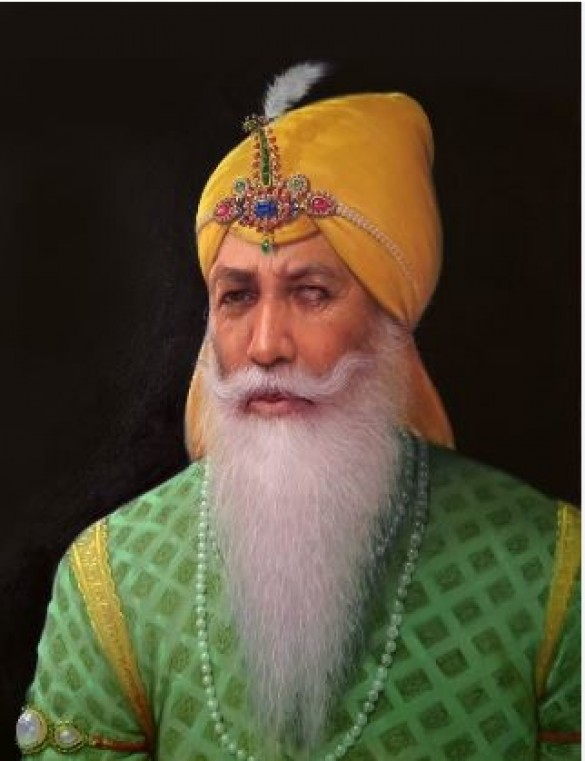
Maharaja Ranjit Singh known as the Lion of the Punjab or Sher-e-Punjab was born on November 13, 1780, in Gurjranwala (presently in Pakistan). The great ruler and warrior was the founder of the Sikh kingdom of Punjab.
He survived smallpox in infancy but lost sight in his left eye. At the age of 10, he participated in the battle with his father. At the age of 12 Maharaja Ranjit Singh's father passed away, he fought in various battles to drive the Afghans out during his teenage years until being crowned the “Maharaja of Punjab” at age 21. Through 1839 he oversaw the expansion of his dominion in the Punjab region.
Invading Muslims from the West was met with tenacious resistance from Ranjit Singh. When he overcame Shah Zaman's army in Afghanistan and prevented Punjab from being annexed, he became well-known and respected.
Also Read: Gurudwara Takht Sri Harmandir Patna Sahib
By annexing neighboring states, he widened his dominion. From 1799 to 1849, the Sikh Empire was in power. At its height, the empire covered an area that stretched from Kashmir in the north to Mithankot in the south, and from western Tibet in the west to Khyber Pass in the east. It all began in 1799 when Ranjit Singh conquered Lahore from the Afghans. He was able to bring all of the Sikh misls under his control.
Ranjit Singh's dominion included Lahore, Amritsar, Multan, Peshawar, Jammu, Srinagar, Rawalpindi, and Sialkot as its principal cities.
Ranjit Singh’s army was known as the Khalsa army and he modernized it and improved its training. He recruited people from different backgrounds and ethnicities into his army. He strengthened both infantry and artillery. He brought new equipment for warfare.
His army was composed of Hindu Brahmins and people of all creeds and castes, and his government was also religiously diverse. Polish, Russian, Spanish, Prussian, and French officers served in his army. He hired a British officer named Foulkes in 1835 as his relationship with the British improved.
Also Read:5 Well Known Sikh Temple To Visit
Maharaja Ranjit Singh died on June 27th, 1839. Lahore, and now in Punjab, was the place of his death. At that time, the Sikh Empire ruled over this area. His cremated remains have been preserved in honor of his Samadhi at Lahore, Punjab, where he died and was cremated. Maharaja Ranjit Singh was a righteous leader, according to legend. Because he respected all religions, there was no hatred or discrimination towards any one religion in his Empire.
After the First Anglo-Sikh War, Punjab effectively ceased to be an independent state and all major decisions were made by the British Empire. The Punjabi Army was reduced under the peace treaty with the British Empire, to a tiny skeleton force. Massive punishing war compensation had destroyed any meaningful, independent fiscal policy. At the end of the Second Anglo-Sikh War, it was annexed by the British from Ranjit Singh's youngest son Duleep Singh.
Also Read:Punjab Cabinet approves amendment to 1925 Act for Gurbani transmission 'free for all'
Singh is known for bringing Sikhs together and establishing the prosperous Sikh Empire. The Maharaja was known for governing in a just and secular manner. In his darbar, both Hindus and Muslims were given powerful positions. By covering Harimandir Sahib in Amritsar in gold, he transformed it into the Golden Temple. He is also credited with establishing the Hazoor Sahib Gurudwara in Nanded, Maharashtra, where Guru Gobind Singh is buried.
Also Read: Punjab Assembly Approves Golden Temple's Free Gurbani Telecast Bill